-
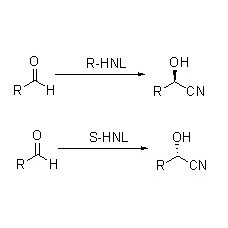
Oxynitrilases (HNL)
About oxynitrilases
ES-HNLs: An class enzyme that enantioselectively catalyze the addition of HCN to aldehydes (ketones) to obtain R or S type cyanide alcohols, which can be easily converted into many kinds of drugs or drug intermediates through chemical method.
There are 29 kinds of oxynitrilase products (Number as ES-HNL-101~ES-HNL-129) developed by SyncoZymes. SZ-HNL is a useful tool to regio- and stereo- selective synthesis of (R)-cyanohydrins or (S)-cyanohydrins from a variety of aromatic, aliphatic and heterocyclic aldehydes or even ketones.
Catalytic reaction type: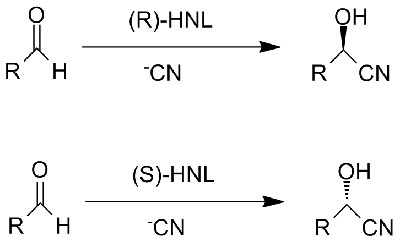
Mobile/Wechat/WhatsApp: +86-13681683526
E-Mail: lchen@syncozymes.com
-
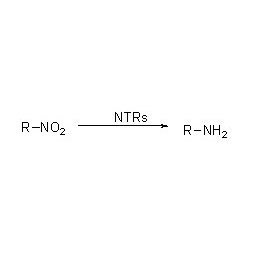
Nitro reductase (NTR)
About nitro reductase
ES-NTRs: Are flavoenzymes that catalyze the NAD(P)H-dependent reduction of the nitro groups on nitroaromatic and nitroheterocyclic compounds to hydroxylamino and/or amino derivatives. They are widely used in organic synthesis of aromatic hydroxylamine and aromatic amine, tumor therapy, biological detection and the degradation of environmental pollutants. There are 12 kinds of Nitro reductase (NTR) products (Number as ES-NTR-101~ES-NTR-112) developed by SyncoZymes.
Mobile/Wechat/WhatsApp: +86-13681683526
E-Mail: lchen@syncozymes.com
-

Aldolase (DERA)
ES-DERAs: Can effectively catalyze the stereoselective addition of donor ketones to receptor aldehydes. Moreover, the reaction can be carried out in aqueous solution of neutral pH without special protective measures. They belong to class I aldolase, which forms Shiff base in the catalytic process. The substrate is covalently bonded with the amino group of the active site to initiate the breakage and formation of the bond. The difference between DERAs and other aldolases is that the substrates they catalyze are aldehydes and can undergo continuous aldehydes condensation.
Mobile/Wechat/WhatsApp: +86-13681683526
E-Mail: lchen@syncozymes.com
-
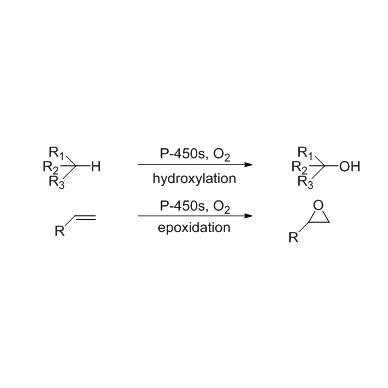
Cytochrome P450 monooxygenase (CYP)
About CYP
ES-CYPs: A class of redox enzymes with mercaptan-heme as the active center to catalyze oxygen transfer. They are terminal oxygenases and needs heme to activate oxygen.
Cytochrome P450 monooxygenase catalyze the oxidation, epoxidation and hydroxylation of alkyl, hydroxylation and oxidation of ammonia, oxidation of sulfur, dealkylation(oxygen, sulfur, ammonia), oxidative dehydrogenation, deamination and dehalogenation.
There are 8 kinds of cytochrome P450 monooxygenase products (Number as ES-CYP-101~ES-CYP-108) developed by SyncoZymes.Mobile/Wechat/WhatsApp: +86-13681683526
E-Mail: lchen@syncozymes.com
-

Alcohol oxidase (AOX)
About alcohol oxidase
ES-AOXs: These enzymes are able to catalyze oxidation of fatty alcohols or aryl-alcohols to form aldehydes. They utilise molecular oxygen but does not require an externally added cofactor, and hydrogen peroxide produced.
There are 6 kinds of alcohol oxidases products (Number as ES-AOX-101~ES-AOX-106) developed by SyncoZymes. ES-AOX101 and ES-AOX102 prefer aliphatic alcohol substrates, ES-AOX103~ ES-AOX105 prefer aromatic alcohol substrates, and ES-AOX106 is cholesterol oxidase. SZ-AOX is a useful tool to catalyze oxidation of fatty alcohols or aryl-alcohols to produce aldehydes.
Catalytic reaction type:

Mobile/Wechat/WhatsApp: +86-13681683526
E-Mail: lchen@syncozymes.com
-
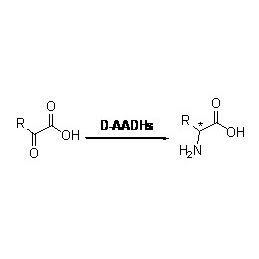
D-Amino acid dehydrogenase (D-AADH)
About D-Amino acid dehydrogenase
ES-D-AADH (D-Amino acid dehydrogenase): an enzyme that can reduce 2-keto acid into corresponding D-amino acid. The reaction need NADP(H) and inorganic ammonia donor (such as ammonia or ammonium ion). There are 17 kinds of D-amino acid dehydrogenases (Number as ES-DAADH-101~ ES-DAADH-117) developed by SyncoZymes.
Catalytic reaction type:
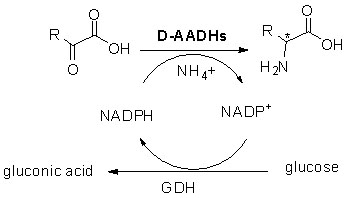
Mobile/Wechat/WhatsApp: +86-13681683526
E-Mail: lchen@syncozymes.com
-
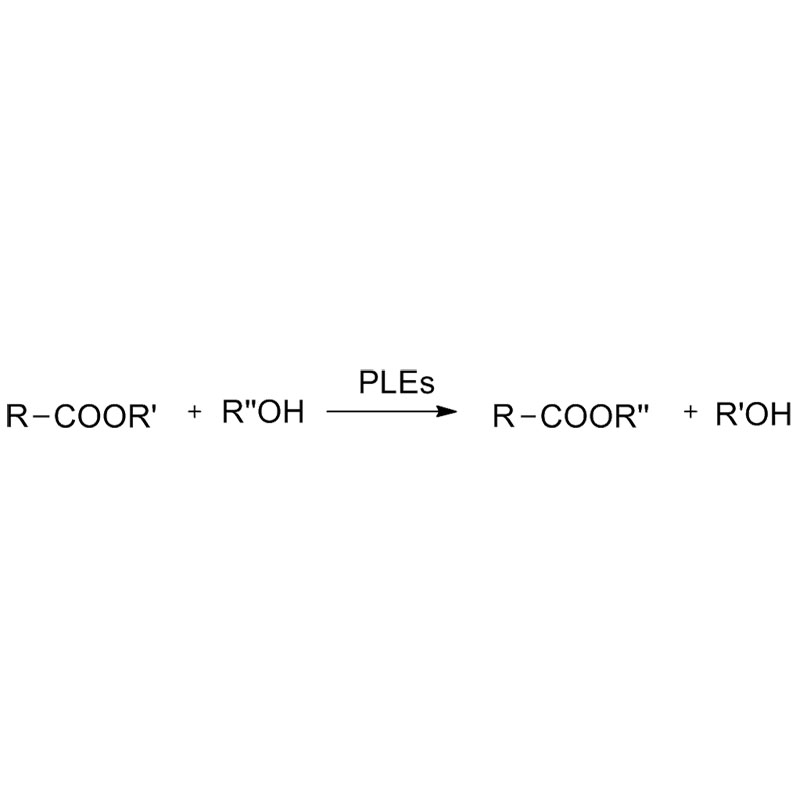
Esterase&Lipase (PLE&CALB)
About Esterase&Lipase
ES-PLEs: A class of hydrolases that catalyze the formation and breakage of ester bonds. They can take part in many kinds of biochemical reactions, such as esterification, transesterification and hydrolysis. They are widely used in many fields such as food processing, chemical industry, biomedicine, chiral medicine and environmental treatment.
Mobile/Wechat/WhatsApp: +86-13681683526
E-Mail: lchen@syncozymes.com
-
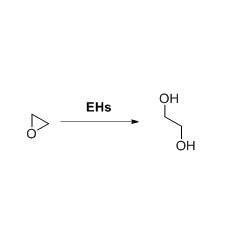
Epoxide hydrolase (EH)
About epoxide hydrolase
EH is ether hydrolase that catalyze the stereoselective hydrolysis of racemic epoxides to produce 1, 2-diol and optically active epoxides, which can be used for the chiral resolution of epoxides or the preparation of chiral diols. They are widely used in medicine and other fields. There are 3 kinds of epoxide hydrolases products (Number as ES-EH-101~ES-EH-103) developed by SyncoZymes. ES-EH is a useful tool to catalyze the synthesis of chiral alcohols through stereoselective hydrolysis of aliphatic and aromatic epoxides.
Catalytic reaction type:
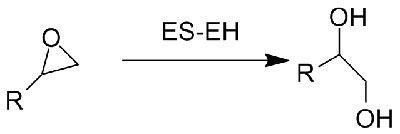
Mobile/Wechat/WhatsApp: +86-13681683526
E-Mail: lchen@syncozymes.com
-
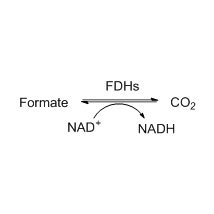
Formate dehydrogenase (FDH)
About Formate dehydrogenase
ES-FDH (Formate dehydrogenase): FDH catalyze the dehydrogenation of ammonium formate to produce carbon dioxide and ammonia, and reduce NAD to NADH with NAD as electron receptor. FDH is often used for the regeneration of coenzyme NADH. There are 4 kinds of FDH enzyme products (ES-FDH-101~ES-FDH-104) developed by SyncoZymes, among which ES-FDH102 has the highest activity and is the mainly recommended FDH.
Catalytic reaction type:

Mobile/Wechat/WhatsApp: +86-13681683526
E-Mail: lchen@syncozymes.com
-
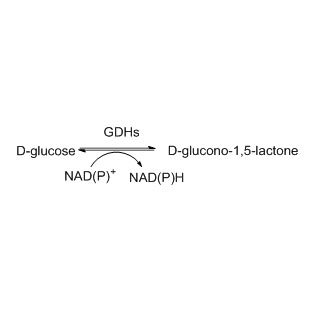
Glucose dehydrogenase (GDH)
About Glucose dehydrogenase
ES-GDH (Glucose dehydrogenase): GDH catalyze the dehydrogenation of glucose to produce gluconic acid (lactone), and reduce NAD(P)+ to NAD(P)H, with NAD(P)+ as electron receptor. GDH is often used for the regeneration of coenzyme NAD(P)H in biocatalysis fields with other main enzyme. There are 10 kinds of GDH enzyme products (ES-GDH-101~ES-GDH-110) developed by SyncoZymes, among which ES-GDH110 has the highest activity and is the mainly recommended GDH.
Catalytic reaction type:

Mobile/Wechat/WhatsApp: +86-13681683526
E-Mail: lchen@syncozymes.com
-
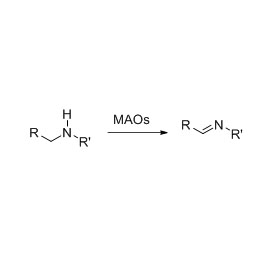
Monoamine oxidase (MAO)
About Monoamine oxidase
ES-MAO(Monoamine oxidase): MAO catalyze the oxidative deamination of monoamines to produce hydrogen peroxide, ammonia and corresponding aldehydes. In the catalytic process, oxygen is necessary as oxidant. There are 6 kinds of MAO enzyme products (Number as ES-MAO-101~ES-MAO-106) developed by SyncoZymes, which can be used in the oxidative deamination of monoamine compounds.
Catalytic reaction type:

Mobile/Wechat/WhatsApp: +86-13681683526
E-Mail: lchen@syncozymes.com
-
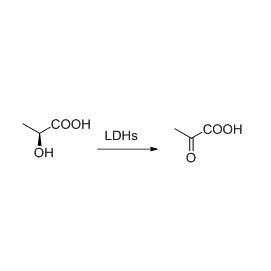
Lactate Dehydrogenase (LDH)
About Lactate dehydrogenase
There is 1 kind of LDH enzyme product (Number as ES-LDH) developed by SyncoZymes. LDH can catalyze the reduction of pyruvate to L-lactic acid, or reduction of other similar α-keto acids. In the process of catalysis, NADH is necessary as hydrogen transporter.
Lactate dehydrogenasecatalytic reaction type

Mobile/Wechat/WhatsApp: +86-13681683526
E-Mail: lchen@syncozymes.com

